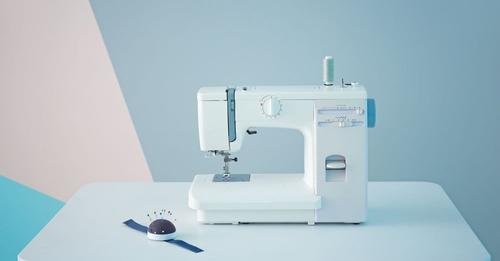Sewing machines are intricate pieces of machinery that require regular maintenance to ensure smooth operation and optimal performance. From cleaning and lubricating moving parts to troubleshooting common issues, proper maintenance is essential for prolonging the lifespan of your sewing machine and avoiding costly repairs. In this comprehensive guide, we’ll provide detailed instructions on how to maintain and troubleshoot your sewing machine, covering everything from routine care to troubleshooting tips for common problems.
1. Routine Maintenance:
Regular maintenance is key to keeping your sewing machine in top condition. Follow these steps to maintain your sewing machine:
- Cleaning: After each use, remove lint, dust, and debris from the machine’s exterior and interior. Use a soft brush, lint brush, or vacuum attachment to clean around the bobbin case, feed dogs, and tension discs. Pay special attention to areas where lint tends to accumulate, such as the needle plate and thread paths.
- Oiling: Lubricate the moving parts of your sewing machine regularly to prevent friction and wear. Refer to your machine’s instruction manual for guidance on oiling points and recommended lubricants. Use only high-quality sewing machine oil and avoid over-lubricating, as excess oil can attract dirt and gum up the machine.
- Check Tension: Periodically check and adjust the tension settings on your sewing machine to ensure optimal stitch quality. Test the tension by sewing on scrap fabric and adjusting the upper and lower tension dials as needed to achieve balanced stitches.
- Replace Needles: Replace sewing machine needles regularly to ensure clean, precise stitching. Use the appropriate needle size and type for your fabric and project, and change the needle after every 8-10 hours of sewing or when it becomes dull or damaged.
2. Troubleshooting Common Issues:
Despite proper maintenance, sewing machines may encounter occasional issues. Here are some common problems and troubleshooting tips:
- Skipping Stitches: If your sewing machine is skipping stitches, check the needle for damage or dullness and replace it if necessary. Ensure that the needle is inserted correctly and tightened securely. Additionally, verify that the thread is threaded properly and that the tension settings are adjusted correctly.
- Thread Tension Problems: Uneven or inconsistent tension can cause issues such as loose stitches or thread breakage. Check the tension settings on your machine and adjust them as needed. Make sure the thread is properly seated in the tension discs and that the bobbin is wound evenly.
- Thread Jamming or Breaking: Thread jams or breaks can occur if the thread is tangled or caught in the machine’s mechanisms. Remove the thread from the machine and rethread it, ensuring that it passes through all thread guides and tension discs correctly. Check for any obstructions or debris in the bobbin case or thread path and remove them.
- Machine Jamming or Binding: If your sewing machine is jamming or binding, check for tangled thread, lint buildup, or foreign objects in the bobbin case or feed dogs. Clean the machine thoroughly and remove any obstructions. If the problem persists, consult your machine’s instruction manual for guidance on troubleshooting mechanical issues.
- Uneven Stitching or Fabric Feed: Uneven stitching or fabric feed may be caused by incorrect presser foot pressure, feed dog adjustments, or differential feed settings. Check these settings on your machine and adjust them as needed to ensure smooth and even fabric feed.
3. Professional Servicing:
If you encounter persistent issues with your sewing machine or if you’re unsure how to address a problem, it’s best to seek professional servicing. A qualified sewing machine technician can diagnose and repair mechanical issues, adjust tension settings, and perform routine maintenance to keep your machine running smoothly. Be sure to choose a reputable service provider with experience working on your specific brand and model of sewing machine.
4. Preventive Measures:
In addition to regular maintenance and troubleshooting, there are several preventive measures you can take to keep your sewing machine in good condition:
- Cover When Not in Use: When not in use, cover your sewing machine with a dust cover or case to protect it from dust, debris, and sunlight.
- Store Properly: Store your sewing machine in a clean, dry environment away from direct sunlight and extreme temperatures. Avoid storing it near sources of moisture or heat, as these can damage the machine’s components.
- Use Quality Materials: Use high-quality thread, fabric, and sewing machine accessories to reduce wear and tear on your machine and achieve better stitching results.
- Follow Manufacturer’s Guidelines: Always follow the manufacturer’s guidelines and recommendations for maintenance, troubleshooting, and usage to ensure the longevity and performance of your sewing machine.
In conclusion, proper maintenance and troubleshooting are essential for keeping your sewing machine in top condition and ensuring smooth and trouble-free operation. By following the guidance provided in this comprehensive guide, you can maintain your sewing machine’s performance, troubleshoot common issues, and address problems effectively to keep your sewing projects on track. With regular care and attention, your sewing machine will continue to be a reliable and indispensable tool in your crafting arsenal for years to come.




